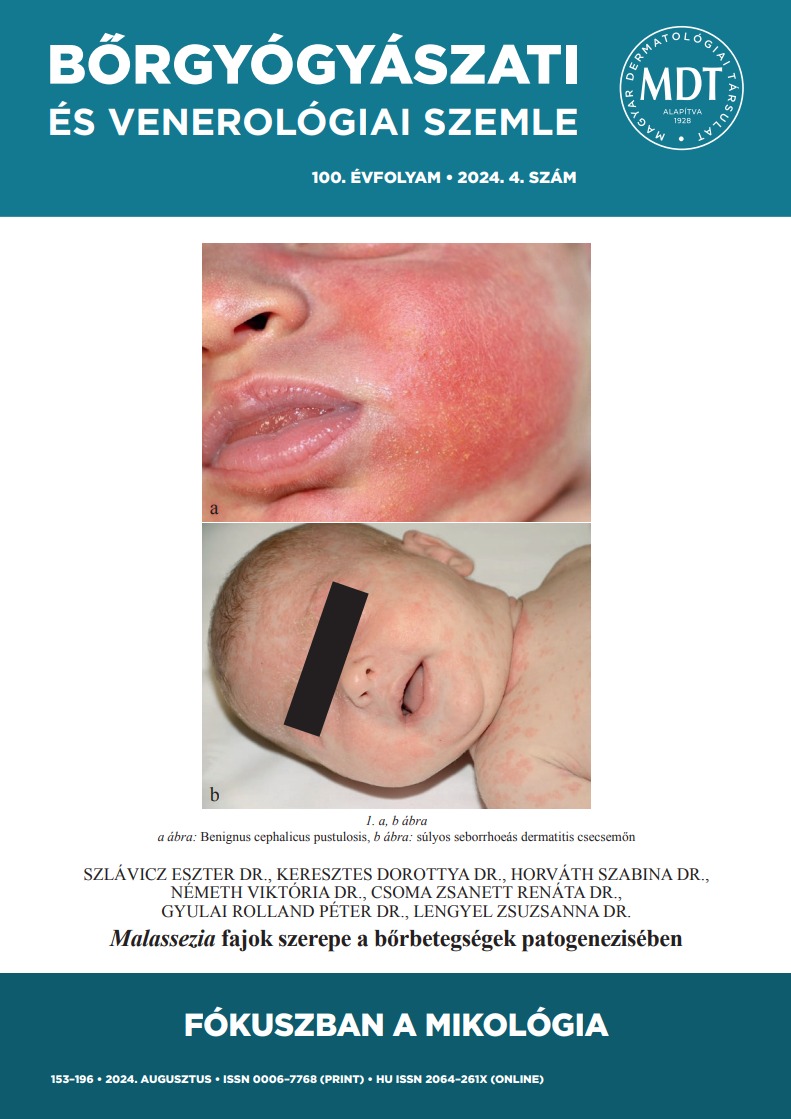The role of Malassezia species in the pathogenesis of skin diseases
Abstract
Members of the Malassezia genus are lipophilic fungi that are closely adapted to the milieu of skin areas rich in sebaceous glands. They are the most important fungal elements of the adult skin microbiome, with colonization starting immediately after birth. In recent years, their role in the pathogenesis of many skin diseases has been suggested, however, data regarding their actual function in etiology of each disease are contradictory. In our report, we would like to present the complex immunological mechanisms associated with colonization of Malassezia species, as well as aspects related to integrity of skin barrier. In addition to the common skin lesions (pityriasis versicolor, Malassezia folliculitis, benign cephalic pustulosis), we cover in detail the roles of Malassezia species in chronic inflammatory skin diseases, paying special attention to the pathogenesis of seborrheic dermatitis.




